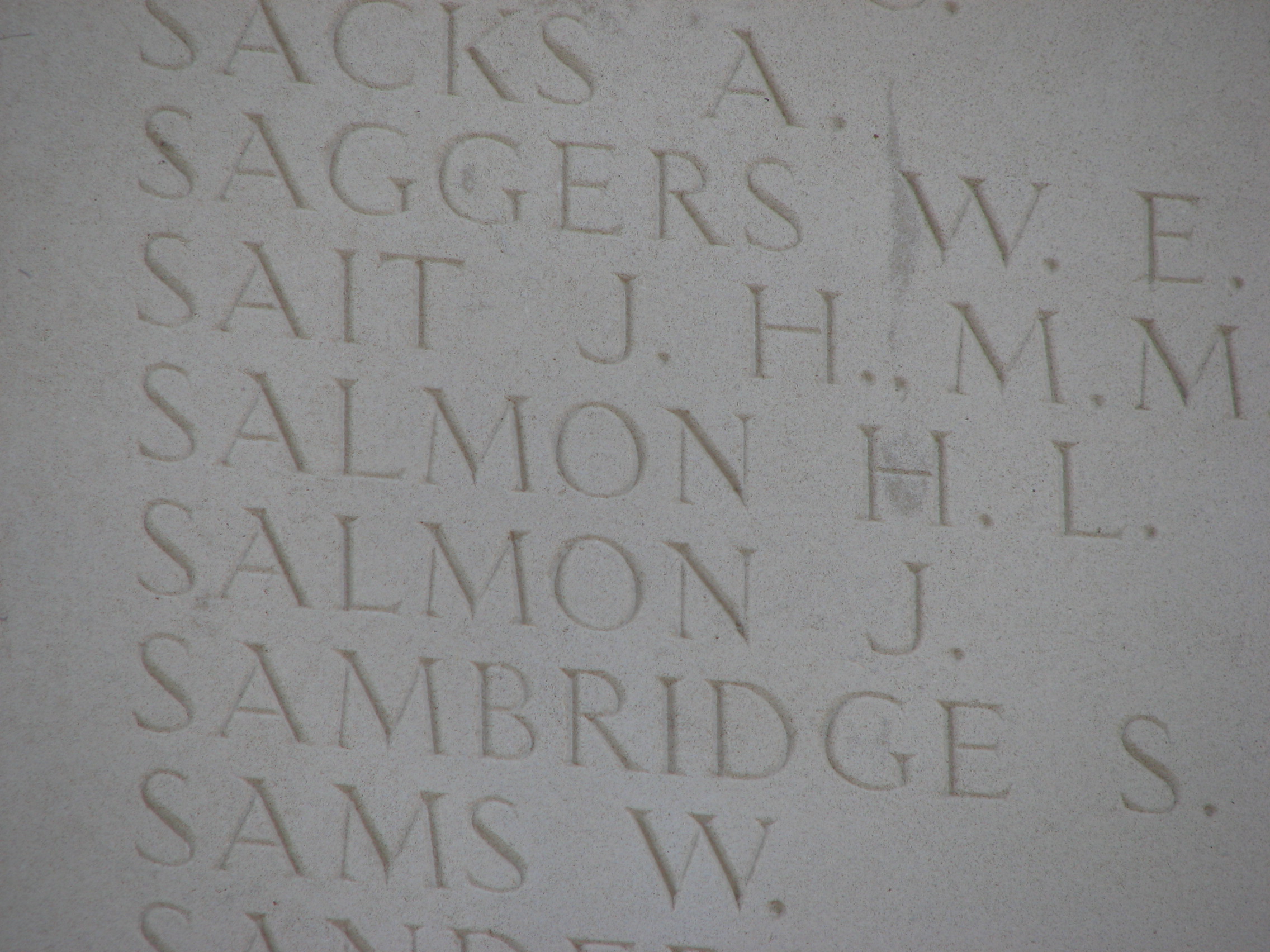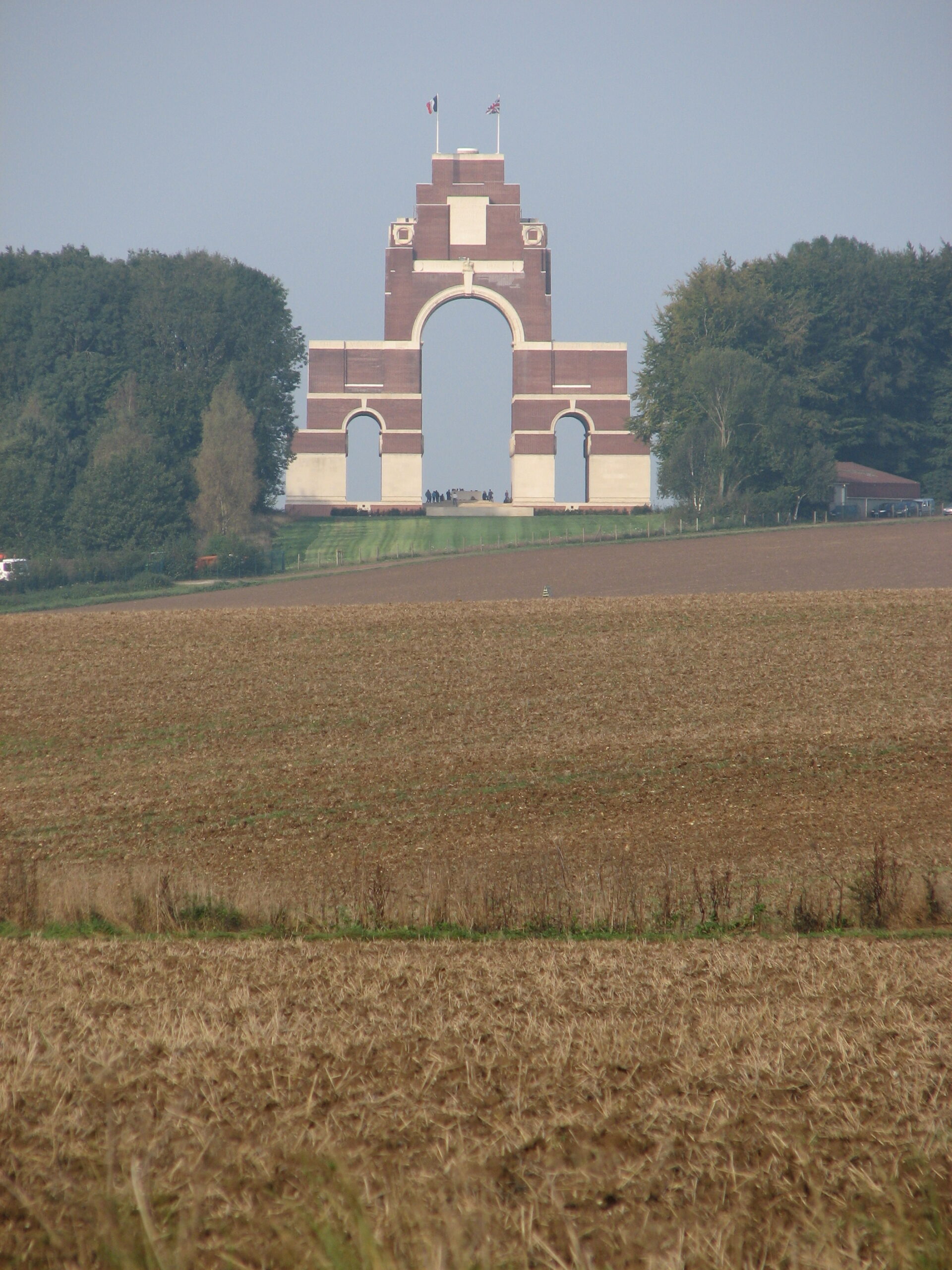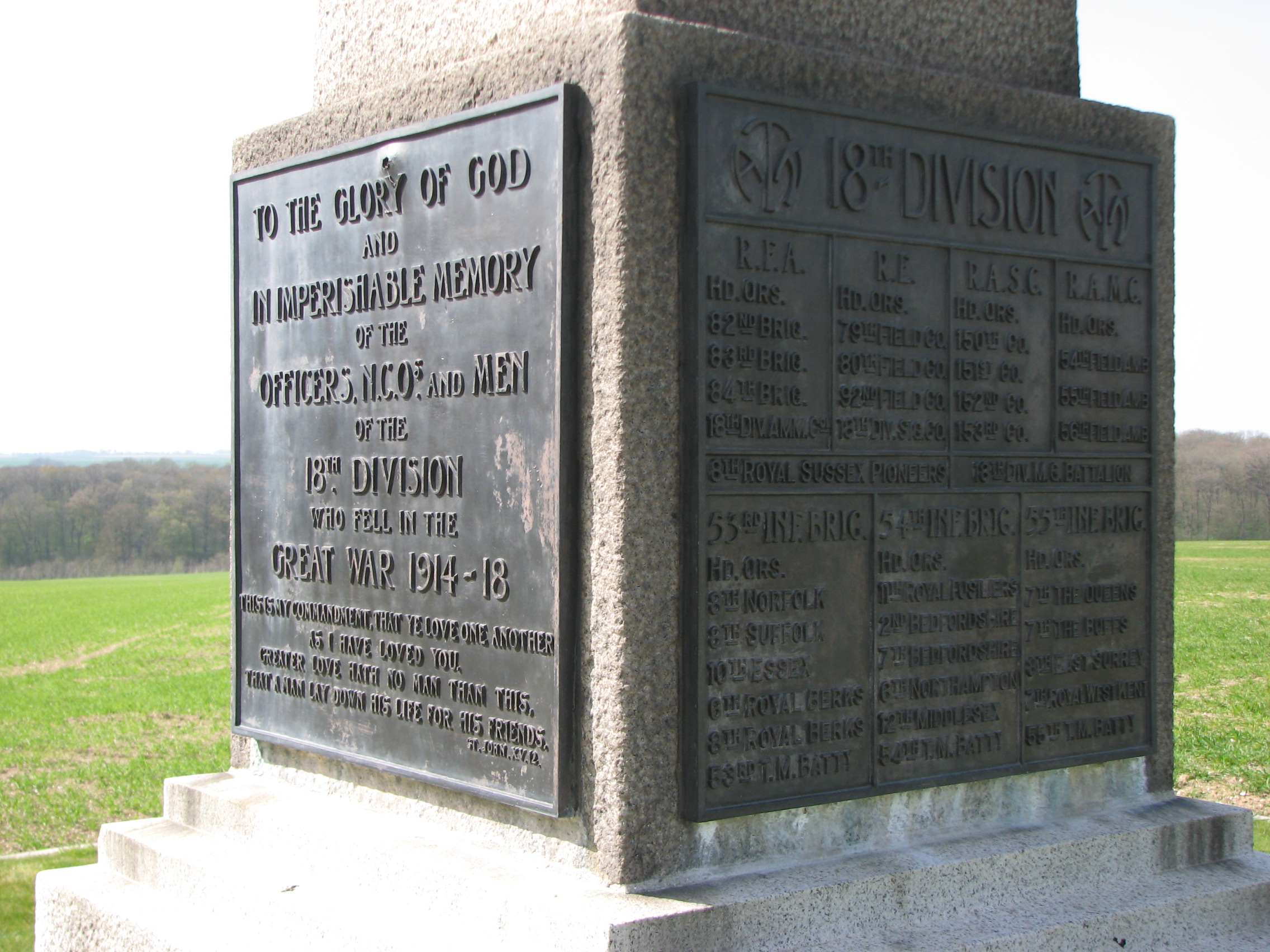Hugh Salmon (1892 - 1916)
Hugh volunteered to join the Army in September 1914 and served with the 10th Battalion of the Essex Regiment on the Western Front. He was one of 10 Bergholt men who lost their lives in the Battle of the Somme.
- 55
- Died in the Great War
- 51.978015, 1.023338
Details
| Name: | Hugh Leonard Salmon |
| Service: | British Army |
| Unit: | 10th Battalion, Essex Regiment |
| Regimental Number: | 15355 |
| Rank: | Private |
| Date of Death: | 21st October 1916 |
| Age: | 24 |
| Commemorated: | Face D of Pier 10, Face D, Thiepval Memorial, Near Albert, France |
Family Background and Early Life
Hugh Salmon was born in East Bergholt, most likely at his parents’ house near the Hare and Hounds, on 15th April 1892. Hugh was the second child of Edmund and Ellen Salmon.
Edmund Salmon was a Baker, originally from Capel St. Mary, who had married Ellen Butcher in 1889. Ellen was from Shimpling near Bury St. Edmunds, though by the time of her marriage she may well have been employed as a live-in servant in East Bergholt for a number of years. Edmund and Ellen would have 8 children, though 1 died in infancy. 1 Two of Hugh’s brothers also served in the Army during the Great War. Fortunately, they both survived:
Charles, the eldest brother, joined the Army under the Group Scheme. Her served with the Royal Field Artillery in India, where he was involved in military operations.
Joseph, the younger brother, was conscripted into the Army in March 1918. He served in the Middlesex Regiment, but did not serve overseas (at least, not in a theatre of war).
Hugh started at the village school at Burnt Oak in September 1897 and remained a pupil there until March 1905. 2 One of Hugh’s fellow pupils who started School the same day as him was Edward Clarke, from Burnt Oak. During the Great War, Edward served as a Private in the 2nd Battalion, and later the 11th Battalion, of the Essex Regiment. He died in hospital in Rouen on 6th October 1916, from wounds he had received in late September during the Battle of the Somme. Edward is buried in St. Sever Cemetery in Rouen. It is not clear what Hugh did straight from leaving School, but by 1910 he was employed at the Xylonite factory at Cattawade, where he was worked in the Roller Shop. 3 By this time, Hugh’s father had stopped being a Baker, and also worked at the Xylonite factory.
Joins the Army
On 7th September 1914, just over a month after Great Britain declared war on Germany following its invasion of neutral Belgium, Hugh volunteered to join the Essex Regiment. He was posted to the Regiment’s newly formed 10th Battalion. This was the second battalion of the Regiment that was raised specifically for the War, as a result of the large number of volunteers responding to Lord Kitchener’s call. 4 On 7th August 1914, Lord Kitchener, the Secretary of State for War and a national hero, issued his first appeal “an addition of 100,000 men” to the Army. Within 2 months, nearly 750,000 men had enlisted.
The Battalion underwent most of their training at Colchester, before they moved to a camp on Salisbury Plan in May 1915. The 10th Essex (including Hugh) was sent to France, as part of the 18th (Eastern) Division, and disembarked at Le Havre in the early hours of the 26th July 1915, having sailed from Folkestone the day before.
By late August 1915 the 18th Division had taken over a part of the front near the town of Albert, on the Somme – the British having only recently taken over responsibility for this area from the French Army.
Over the next 11 months, the Battalion’s tours of duty in the front line were all spent in this sector, which was at that time considered quiet. That is not to say that it was free of danger, and the Battalion suffered many casualties, including its Commanding Officer who was killed.
The Battle of the Somme
The Somme had been a quiet sector and that was part of the reason it had been chosen as the location for a massive Anglo-French offensive – “the big push”. That offensive is now called the Battle of the Somme.
The 10th Essex were involved in the fighting on 1st July 1916 (the first day of the Battle) when they attacked north of the village of Carnoy, and helped their Brigade attain its objectives. The 18th (Eastern) Division was one of the very few which attained all of its objectives on that day. 5 Their achievements on the first day of the Battle of the Somme, were the first of the 18th (Eastern) Division’s many successes over the next 28 months. By the end of the War, the 18th (Eastern) Division had come to be regarded as one of the elite divisions of the British Expeditionary Force (B.E.F.).
The Battalion remained on the Somme for most of July: During that time they captured Caterpillar Wood and were in support during the capture of Trones Wood. Less than a week later the 10th Essex suffered heavy losses in three days of fighting when – in the face of a tremendous bombardment, and several German counterattacks – they held that part of Delville Wood that had already been captured by the British.
All of August, and much of September were spent out of the line, in training. The Battalion returned to the front lines on the Somme in late September. On 26th of that month, they were involved in another triumph for the 18th Division when they helped to finally capture the fortress village of Thiepval. This had been one of the initial objectives on the first day of the Battle nearly three months before and had withstood numerous British attacks since then. 6 After the War, three Memorials were erected to the 18th (Eastern) Division in France and Belgium – two of those stand on the Somme, one at Trones Wood, and the other at Thiepval.
Regina Trench
After a spell out of the trenches, the 10th Essex was one of two battalions tasked with the capture of Regina Trench, which ran to the north-west of the village of Courcelette. The attack was launched on the afternoon of 21st October, and the objective was quickly achieved: In the process at least 250 Germans were killed, and 315 taken prisoner.
The Battalion’s casualties in the attack were relatively light and included 20 dead. Hugh was one of those who had been killed.
Hugh has no known grave and is officially commemorated on Face D of Pier 10 of the Thiepval Memorial to the Missing. This Memorial to the Missing of the Somme contains the names of over 72,000 officers and men of the United Kingdom and South African forces who died in the Somme sector before 20th March 1918, and have no known grave.
Copyright © Mark Ashmore, 2024
- 55
- Died in the Great War
- 51.978015, 1.023338





